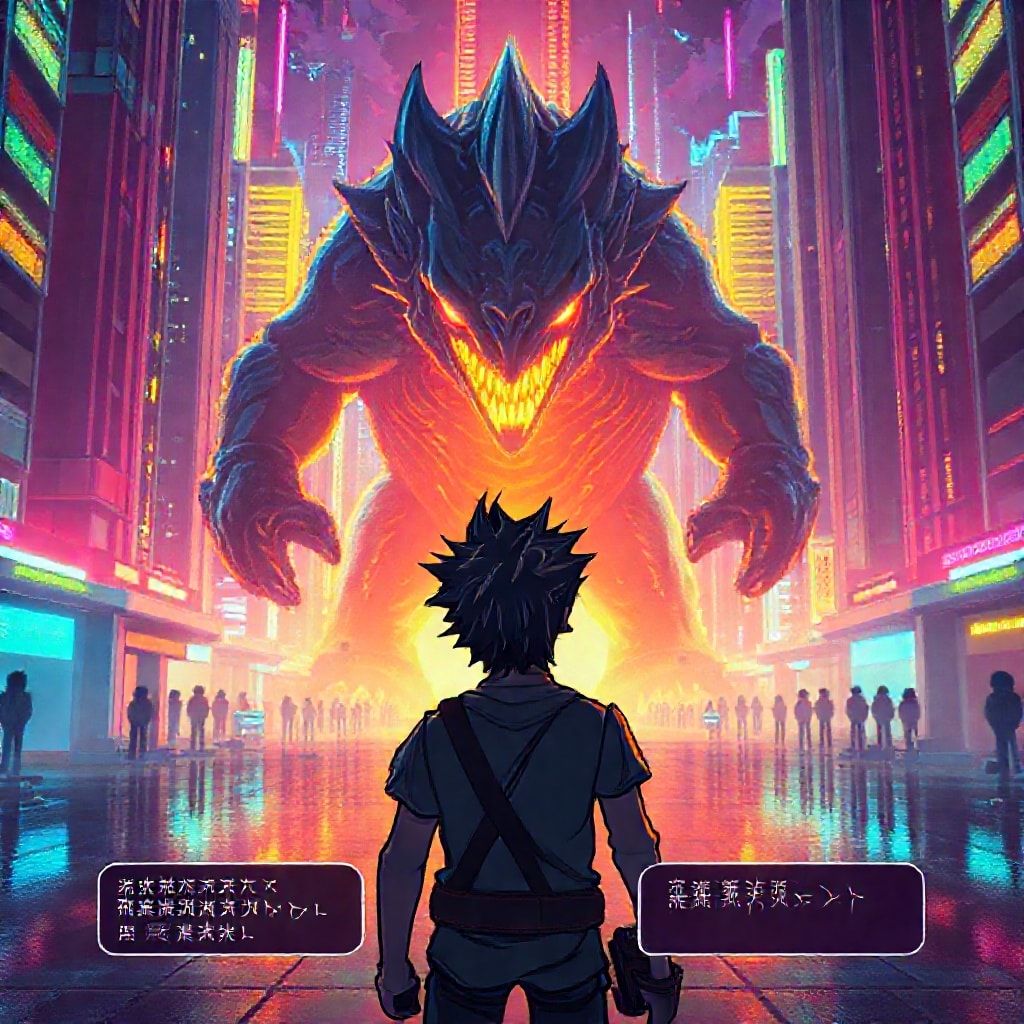
The world of video games has always been a canvas for imagination, but its ability to tell a story has undergone a truly revolutionary transformation. What began as simple, linear tales, often serving merely as bookends for gameplay, has blossomed into intricate, player-driven sagas with choices that genuinely matter. It’s a journey from being a mere spectator to an active participant, a shift that has redefined what interactive entertainment can be. Join us as we explore how video game storytelling evolved from straightforward narratives to a complex web of branching paths, offering players unprecedented agency and emotional depth.
The Early Days: Linear Storytelling Takes the Stage
In the nascent years of video games, storytelling was often a secondary consideration, constrained by technological limitations and the primary focus on arcade-style gameplay. Narratives were typically presented as an introduction and a conclusion, framing the action without significant player input.
Pixelated Plots and Fixed Fates
Think back to the classics. Pac-Man had no grand narrative; it was about eating dots and avoiding ghosts. Even games with more defined goals, like Super Mario Bros., followed a very direct path: Bowser kidnaps Peach, Mario saves her. The story was a simple, sequential progression. Players didn’t make choices that altered the plot; they simply moved from one level to the next, following a predetermined script. Early adventure games, while more text-heavy, still largely guided players through a set sequence of events, albeit with puzzles to solve along the way. These were tales told to the player, not crafted by them.
The Rise of Cinematic Experiences
As technology advanced, so did the ambition of game developers. The late 80s and 90s saw the advent of more complex graphics and sound, allowing for richer, more cinematic presentations. Games like Final Fantasy VII and Metal Gear Solid became renowned for their epic storylines, memorable characters, and lengthy cutscenes. These titles proved that video games could deliver narratives as compelling as any movie. However, while emotionally resonant, these stories remained largely linear. Players experienced the narrative as a carefully constructed film, with their input primarily focused on gameplay segments between the story beats. Choices within these games were usually about combat tactics or exploration, not about altering the fundamental direction of the plot or the fate of key characters.
The Dawn of Choice: Player Agency Emerges
The turn of the millennium brought a growing desire among developers and players alike for more interactive narratives. Why just watch a story unfold when you could actively shape it?
Simple Forks in the Road
Early attempts at injecting player agency often manifested as “forks in the road.” Games like Deus Ex (2000) offered players different ways to approach objectives – stealth, combat, or diplomacy – which could lead to slightly varied outcomes or dialogue. Similarly, early BioWare titles, such as Star Wars: Knights of the Old Republic (2003), introduced moral alignment systems (Light Side/Dark Side) where choices gradually nudged the player character towards one philosophical extreme, affecting certain story branches and abilities. While these choices were significant, they often led to one of a few predetermined endings, rather than a truly dynamic narrative that constantly reshaped itself based on every decision.
Moral Mazes and Consequential Decisions
As developers refined their craft, the impact of player choices grew deeper. Games began to explore moral dilemmas that weren’t just about good or evil, but about shades of grey, personal sacrifice, and the far-reaching consequences of one’s actions. The Mass Effect series (starting in 2007) became a benchmark, allowing players to build relationships, make difficult life-or-death decisions for squadmates, and shape the fate of entire galaxies over the course of multiple games. The Fable series also experimented with how player actions, both positive and negative, visually transformed their character and the world around them. These games moved beyond simple A/B choices, creating narratives where the player’s identity and legacy were woven into the very fabric of the story.

The Branching Revolution: Complex Narratives and Player-Driven Worlds
Today, the landscape of video game storytelling is dominated by the desire for player agency, with developers pushing the boundaries of what “choice” truly means.
The Illusion of Choice vs. True Branching
It’s important to distinguish between the illusion of choice and genuine branching narratives. Some games present choices that ultimately funnel back to the same plot points, offering different dialogue but not altering the core story path. However, many modern games commit to true branching, where decisions can lead to entirely different quests, character fates, or even major plot divergences. This requires immense development effort, often necessitating the creation of content that many players may never see, but the reward is a deeply personal and replayable experience. The concept of a “narrative tree” became crucial, mapping out how decisions propagate through the story.
Open Worlds and Emergent Storytelling
The rise of vast open-world games has further blurred the lines between player action and narrative. Titles like The Witcher 3: Wild Hunt, The Elder Scrolls V: Skyrim, and Red Dead Redemption 2 offer immense freedom, allowing players to tackle quests in any order, explore at their leisure, and stumble upon countless mini-narratives. While these games often have a main questline, a significant portion of their storytelling is emergent – it arises from the player’s interactions with the world, its inhabitants, and the consequences of their choices in side quests. A seemingly minor decision in a small village can have ripple effects hours later, creating a unique story for each player based on their journey through the expansive world.

The Telltale Model and Interactive Dramas
Another significant development has been the popularization of narrative-focused games where choice *is* the primary gameplay mechanic. Telltale Games pioneered this model with titles like The Walking Dead, where players face constant, agonizing decisions under time pressure, with every choice having visible (and often brutal) consequences for character relationships and plot progression. Similarly, games like Life is Strange emphasize character development and emotional resonance through dialogue options and choices that can subtly or dramatically alter the future. These games put the player squarely in the director’s chair, making them responsible for the unfolding drama and its often heart-wrenching outcomes.

The Future of Storytelling: Blurring the Lines
The evolution of storytelling in video games is far from over. Developers continue to grapple with the challenges of creating truly expansive and reactive narratives – the sheer volume of content required for deep branching is immense, and ensuring every path feels meaningful is a monumental task. However, the opportunities are even greater. We’re seeing experiments with AI-driven narrative generation, procedural storytelling that adapts to player actions in real-time, and games that blur the lines between traditional genres, offering narrative depth even in unexpected places.
The goal is to create even deeper immersion, where every player’s journey is truly unique, where their decisions aren’t just cosmetic but fundamentally reshape the world and their place within it. Imagine games where characters remember your every action, where the world dynamically evolves based on your reputation, or where the narrative itself is a living, breathing entity that responds to your personal playstyle and moral compass.
Conclusion
From the straightforward paths of early pixelated adventures to the intricate, player-driven sagas of today, video game storytelling has undergone a remarkable transformation. We’ve journeyed from simply consuming a narrative to actively crafting it, embracing player agency as a core tenet of the interactive experience. The shift from linear narratives to complex branching paths has not only deepened our emotional connection to virtual worlds but has also cemented video games as a powerful, unique medium for storytelling. As technology continues to advance, the possibilities for interactive narratives are boundless, promising even more immersive, personal, and unforgettable stories waiting to be told – by us.






